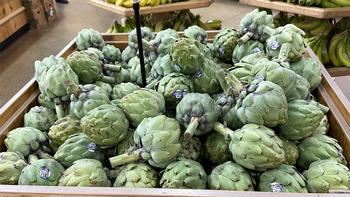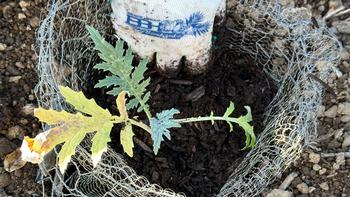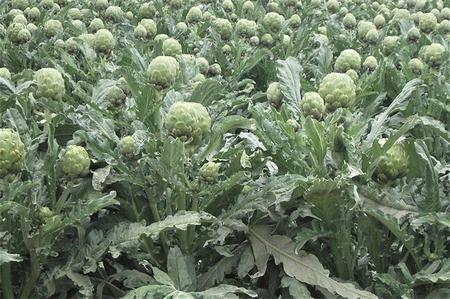News from the Edible Demo Garden
January 2024: Planting Time for Artichokes
In December EDG volunteers planted winter garden edibles including carrots, fennel, cabbage, kale, and – artichokes. While artichokes may not be on every gardener’s cool season vegetable list, they are fun to grow, and December is the right time to plant them for an early spring crop. Since almost all artichokes sold commercially are grown in California, it was designated the official state vegetable in 2013.
What is an artichoke?
Artichokes are large plants in the sunflower family (Asteraceae). The edible parts are the large flower buds that form on the tops of tall stalks. The buds are typically green, but some varieties are violet-tinged. Buds that are not harvested for cooking and eating will open into attractive purple thistlelike flowers.
Although some may consider artichokes exotic and too much trouble to eat, they have been enjoyed since Roman times. Italian immigrants brought artichokes to Monterrey County where they grew well in the Mediterranean like climate. When artichokes first became popular in the US there was a problem meeting the demand and there are stories of a Mafia attempt to corner the market. Fortunately, we can now have all the artichokes we want to eat when they are in season.
What artichoke varieties grow well in Marin?

Are Artichokes Annuals or Perennials?
In California artichokes are commonly grown as short-lived perennials producing both spring and fall crops. After the spring harvest they are cut back to the ground and kept dry to encourage summer dormancy after which they are regrown in the fall for another crop. However, early maturing varieties like ‘Imperial Star’ and ‘Colorado Star’ also work well as annuals when planted in late fall. In the Edible Demo Garden, the two new varieties replaced older plants that had aged past their prime and suffered some gopher damage.
How to Grow and Harvest Artichokes

The buds on the artichoke plant are ready to harvest just as the lowest bracts begin to open. Once a bud opens more fully, the tenderness and flavor diminish. Harvesting the top bud stimulates the lower buds to develop. Buds should be harvested by cutting the stem about 2 inches below the bud.
For more information on growing artichokes, click here.

